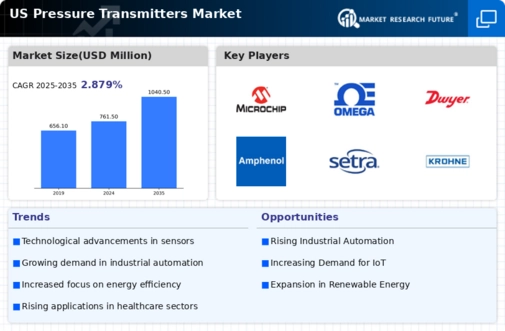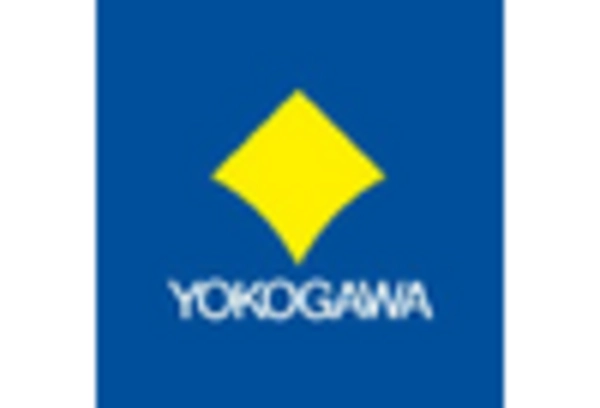Growth in Industrial Automation
Industrial automation is transforming manufacturing processes across various sectors in the US, driving demand for pressure transmitters. As industries adopt smart technologies, the need for precise pressure monitoring becomes paramount. The pressure transmitters market industry is experiencing a surge, with the automation market projected to reach $300 billion by 2025. This growth indicates a robust demand for pressure transmitters that can integrate with automated systems, enhancing operational efficiency and reducing downtime. Companies are increasingly recognizing the value of real-time data, which pressure transmitters provide, to optimize production processes.
Increased Focus on Safety Standards
Safety standards in industrial operations are becoming more stringent, influencing the pressure transmitters market. The US Occupational Safety and Health Administration (OSHA) has implemented regulations that require accurate pressure monitoring to prevent accidents. This regulatory environment compels industries to invest in high-quality pressure transmitters that meet safety requirements. The pressure transmitters market industry is likely to see a rise in demand as companies prioritize compliance and risk management. The emphasis on safety not only protects workers but also enhances operational reliability, making pressure transmitters an essential component in various applications.
Rising Demand in Oil and Gas Sector
The oil and gas sector is a primary driver for the pressure transmitters market. As exploration and production activities intensify, the need for accurate pressure measurement becomes critical. In the US, the oil and gas industry is projected to grow, with investments reaching approximately $100 billion by 2026. This growth necessitates advanced pressure transmitters to ensure safety and efficiency in operations. The pressure transmitters market industry is likely to benefit from this trend, as companies seek reliable solutions to monitor and control pressure in various applications, including drilling and refining processes.
Expansion of Water and Wastewater Management
The increasing focus on water and wastewater management in the US is significantly impacting the pressure transmitters market. With the US Environmental Protection Agency emphasizing the need for improved water quality, municipalities are investing in modern infrastructure. This includes the installation of pressure transmitters to monitor water systems effectively. The market for pressure transmitters in this sector is expected to grow at a CAGR of around 6% through 2027. The pressure transmitters market industry is thus positioned to capitalize on these investments, providing essential tools for maintaining system integrity and compliance with regulations.
Technological Innovations in Sensor Technology
Technological innovations in sensor technology are reshaping the pressure transmitters market. Advances in materials and design are leading to the development of more accurate and reliable pressure transmitters. In the US, the market is witnessing a shift towards smart transmitters that offer enhanced features such as wireless connectivity and advanced diagnostics. This trend is expected to drive growth in the pressure transmitters market industry, as industries seek to leverage these innovations for improved performance and efficiency. The integration of IoT capabilities into pressure transmitters is particularly noteworthy, as it allows for real-time monitoring and data analysis.
















Leave a Comment